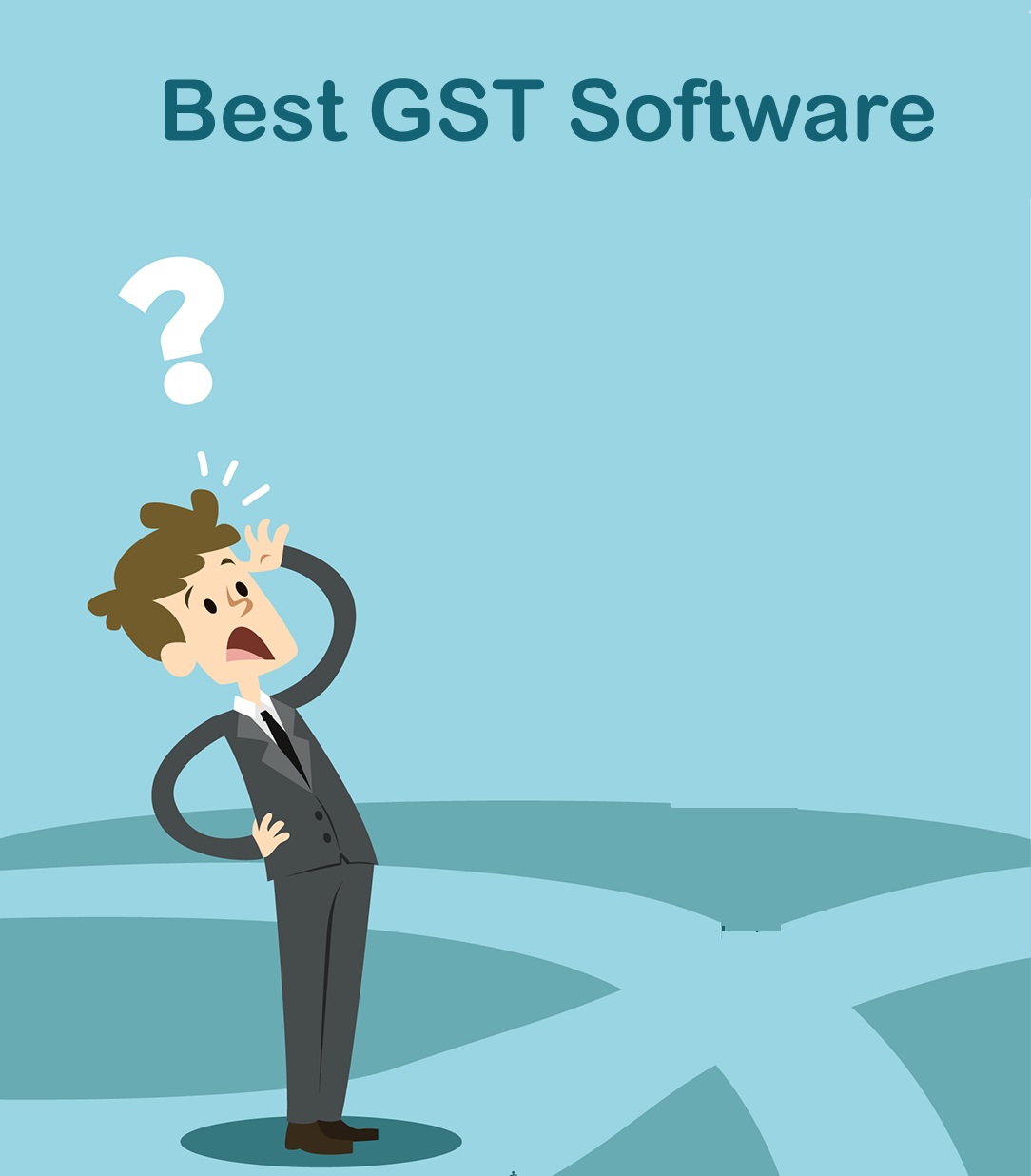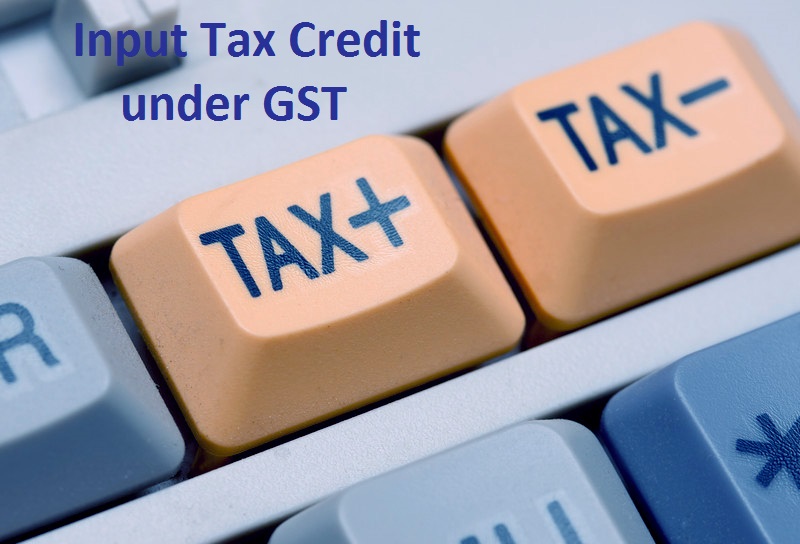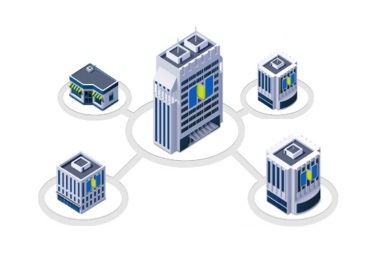
Click here to try a GST Accounting and Return Filing Tool for free
Transitional Provisions Under GST help a registered person through a smooth transition from the current laws to GST without losing any benefits. In our discussion, we have covered these provisions under the following topics:
- Provisions relating to Periodic Supplies
- Provisions Relating to Job Work
- Provisions relating to Long Term Contracts
- Provisions relating to Goods Returns
- Provisions relating to Goods Sent on Approval Basis
- Provisions relating to Price Revisions
- Provisions relating to Credit Distribution
- Provisions Relating to Input Credit
Before we go any further, let us understand that any input credit under Central Excise and Service Tax Act will be carried forward as CGST/ IGST as the case may be and input credit under state VAT Acts will be carried forward as SGST.
What are the transition provisions relating to periodic supplies?
Where there is a contract to supply goods or services or both on a piecemeal basis, the following treatment shall be applied.
Goods
- Value of goods or advance in respect of goods received before 1st July, 2017 shall be subject to tax under the current laws
- Value of goods or advance in respect of goods received after 1st July, 2017 shall be subject to tax under GST
Services
- Value of services or advance in respect of services received before 1st July, 2017 shall be subject to tax under the current laws
- Value of services or advance in respect of services received after 1st July, 2017 shall be subject to tax under GST
Both (Works Contracts)
- Value of the contract or advance in respect of the contract received before 1st July, 2017 shall be subject to tax under the current laws [Note: The tax so paid under current laws shall be claimed as an input credit under GST]
- Total value of the contract invoiced after 1st July, 2017 shall be subject to tax under GST
Illustration 1
Let us take the case of an annual maintenance contract in two situations.
Situation 1
The annual maintenance contracts are billed and settled on a monthly basis on the last day of each month:
- For June 2017, the invoice was raised on 30th June, 2017 and settled on 5th July, 2017
- For July 2017, the invoice was raised on 31st July, 2017 and settled on 5th August, 2017
In this case for June 2017, the services were provided and invoice was received before the implementation of GST and hence the taxes will be discharged as per the Service Tax Act. However, for July 2017, since the services provided and invoice received is post GST implementation, they will be taxed under the GST Act.
Situation 2
The annual maintenance contracts are billed quarterly in advance and 50% of the bill amount is settled within 5 days from the date of the invoice and the balance 50% is settled on the last day of the quarter i.e. for the quarter 1st July, 2017 to 30th September, 2017, the invoice was raised on 15th June, 2017 for INR 100 and 50% of the amount was settled on 20th June, 2017. The balance 50% of the amount is settled on 30th September, 2017.
In this case the 50% of the amount settled on 20th June, 2017 will be taxed under the Service Tax Act and the balance 50% settled on 30th September, 2017 will be taxed under GST Act.
Illustration 2
Let us consider the below situation to understand the transition provisions for works contracts better.
ABC Builders Private Limited commenced the construction of a residential complex on a works contract basis on 1st January, 2016. The project is due to be completed on 31st December, 2017. The terms of sale are that the buyer pays 25% of the price at the end of every 6 months i.e. 4 instalments and an invoice will be issued on payment of the last instalment. The total project cost is INR 1,20,00,000. Occupancy certificate for the houses will be received on 15th January, 2018.
Situation 1
Customer A, books a house on 1st January, 2016 and agrees to settle the entire price of the house in 3 instalments of INR 40,00,000 each i.e. 30th June 2016, 31st December, 2016 and 30th June, 2017.
In this case since the entire amount was settled before the implementation of GST, the whole amount is taxed under the VAT and Service Tax Acts.
Situation 2
Customer B, books a house on 1st January, 2016 and agrees to settle the entire price of the house in 4 instalments of INR 30,00,000 each i.e. 30th June 2016, 31st December, 2016, 30th June, 2017 and 31st December, 2017.
In this case for the first three instalments received before implementation of GST, tax will be paid under the VAT and Service Tax Acts.
|
Date |
Amount Paid | VAT @ 4% | ST @ 6% |
Total Tax |
| 30th June 2016 |
INR 30,00,000 |
INR 1,20,000 |
INR 1,80,000 |
INR 3,00,000 |
| 31st December, 2016 |
INR 30,00,000 |
INR 1,20,000 |
INR 1,80,000 |
INR 3,00,000 |
| 30th June, 2017 |
INR 30,00,000 |
INR 1,20,000 |
INR 1,80,000 |
INR 3,00,000 |
| Total Tax |
INR 9,00,000 |
|||
The invoice is issued will be on 31st December, 2017 on settlement of the last instalment. Here, the entire invoice value i.e. INR 1,20,00,000 will be taxed under GST @ 18% which is INR 21,60,000. However, INR 9,00,000 paid under VAT and Service Tax Acts can be claimed as an input for payment of INR 21,60,000 GST. Hence net tax payable will be INR 12,60,000.
Situation 3
Customer C, books a house on 15th July, 2017, and agrees to settle the amount in two instalments, the first one being 75% of the amount payable on 31st July, 2017 and the balance 25% on 31st December, 2017.
In this case since the entire amount was settled after the implementation of GST, the whole amount is taxed under the GST Act.
What are the transition provisions relating to job work?
Where any inputs, semi-finished goods or finished goods are sent to the job worker for further processing before 1st July, 2017, no tax shall be payable on such inputs, semi-finished goods or finished goods provided, the following conditions are satisfied:
- Principal and Job Worker should declare the details of inputs held in stock by the job worker on behalf of the sender on 1st July, 2017
- The inputs, semi-finished goods or finished goods are received back at the principal place of business within 31st December, 2017
- In case of semi-finished goods or finished goods, they are said goods are transferred to the place of buyer of the goods on payment of tax (without payment of tax for exports)
If the inputs, semi-finished goods or finished goods are not returned to the principal place of business or to the buyer’s place of business before the above mentioned deadline, then the principal will have to pay tax on these under the current laws.
What are the transition provisions relating to long term contracts?
Where a contract has been entered into before 1st July, 2017, and the goods or services or both are provided on or after 1st July, 2017, GST is payable on the value of goods or services or both.
What are the transition provisions relating to goods returns?
Where goods on which tax under the current laws was paid, were sold between 1st January, 2017 to 30th June, 2017 and the buyer returns these goods:
- Within 31st December, 2017
|
Buyer |
Transaction will be treated as? | Impact on the Seller |
Impact on the Buyer |
| Unregistered Person under GST | Returns | Refund of tax paid under the current laws | N/a |
| Registered Person under GST | Supply | Input credit of GST paid by the buyer | GST to be paid by the buyer on the value of goods returned |
- After 31st December, 2017
|
Buyer |
Transaction will be treated as? | Impact on the Seller |
Impact on the Buyer |
| Unregistered Person under GST | Supply | Pay GST on the value of goods returned under reverse charge mechanism and claim input of such tax paid | N/a |
| Registered Person under GST | Supply | Input credit of GST paid by the buyer | GST to be paid by the buyer on the value of goods returned |
What are the transition provisions relating to goods sent on approval basis?
Where goods are sent on approval basis, between 1st January, 2017 to 30th June, 2017 and the buyer returns/ does not approve these goods:
|
Event |
Transaction will be treated as? | Impact on the Seller |
Impact on the Buyer |
| Returned to the seller before 31st December, 2017 | Returns | No tax payable on such goods | No tax payable on such goods |
| Returned to the seller after 31st December, 2017 | Supply | Input credit of GST paid by the buyer | GST to be paid by the buyer on the value of goods returned |
| Not returned at all | Supply | GST to be paid by the seller on the value of goods sent | Input credit of GST paid by the seller |
What are the transition provisions relating to price revisions?
Where a contract has been entered into before 1st July, 2017, and there is an upward or downward revision in the prices of such goods or services after 1st July, 2017, the supplier of such goods or services or both shall within 30 days of such revision:
- Issue a debit note for the difference in price between the price on the invoice and the revised price and additional GST there on, In case of an upward revision
- Issue a credit note for the difference in price between the price on the invoice and the revised price and GST impact there on, In case of a downward revision
Note: The reduction of tax liability on the credit note can be effected only if the recipient of the goods or services or both reverses his input tax credit to that extent
What are the transition provisions relating to credit distribution?
Case 1: Input Service Distributor under the current laws
The input credit available to an Input Service Distributor as on 1st July, 2017 can be distributed as:
- CGST to a recipient in the same state
- IGST to a recipient in a different state
In cases where the services were received by the Input Service Distributor prior to 1st July, 2017 but for which invoice was received on or after 1st July, 2017 can carry forward the input credit as CGST or IGST as illustrated below.
- Invoice received from a supplier in the same state as CGST
- Invoice received from a supplier in the same state as IGST
The distribution of this credit would be in the same manner described above for input credit available on 1st July, 2017
Case 2: Centralized Registration under the current laws
A registered person can carry forward the amount of CENVAT Credit as per the returns filed with the respective authorities, for the period ending 30th June 2017.
Conditions to claim input credit are as follows:
- The input credit should be admissible under GST
- The return for the period ending 30th June, 2017 is filed by 30th September, 2017 (Last day for filing such returns as notified by the Government 15th August, 2017)
- The input credit available as on 1st July, 2017 can be distributed as:
- CGST to a recipient in the same state
- IGST to a recipient in a different state
What are the transition provisions relating to input credit in the case of persons registered under the current laws?
Case 1: Input Credit Outstanding
A registered person can carry forward the amount of CENVAT Credit/ VAT Credit as per the returns filed with the respective authorities, for the period ending 30th June 2017.
Conditions to claim input credit are as follows:
- The input credit should be admissible under GST
- All the returns under the existing laws should have been filed for a period of 6 months immediately preceding 1 July, 2017
- The credit does not relate to exempted goods manufactured or sold or exempted services provided
- Only the taxes can be carried forward i.e. all the cess amounts paid under the current law shall lapse
- The registered person is not opting for Composition Scheme under GST
The returns under the Service Tax Law for the period 1st April, 2017 to 30th June, 2017 has been filed by 15th August, 2017
Case 2: Input Credit on Stock/ Services in Transit
A registered person can carry forward the amount of CENVAT Credit/ VAT Credit on input and/ or input services in transit for the period ending 30th June 2017.
Conditions to claim input credit are as follows:
- Input tax has been paid on the inputs/ input services before 1st July 2017 irrespective of whether the service was received before or after 1st July, 2017
- The invoice for such input/ input service is recorded in the books of account within 30 days from 1st July, 2017
Case 3: Input credit of inputs held in stock by a person under the composition scheme under the current laws
A registered person who is under composition scheme under the current laws can carry forward the amount of CENVAT Credit/ VAT Credit on stock (inputs/ semi finished goods/ finished goods), for the period ending 30th June 2017.
Conditions to claim input credit are as follows:
- These inputs will be used in the making of taxable supplies
- There is an invoice evidencing the payment of tax under the current laws
- The invoice is within a period of 12 months immediately before 1st July, 2017
- The registered person is not opting for Composition Scheme under GST
- The registered person is eligible to avail the credit under GST
Case 4: Input Credit on Capital Goods to the extent not availed in the returns under the current laws
A registered person can claim the amount of CENVAT Credit/ VAT Credit on Capital Goods to the extent not availed in the returns under the current laws before 30th June, 2017.
Conditions to claim input credit are as follows:
- The credit should have been admissible under the current laws
- Credit not availed = Total input credit on the Capital Goods – Credit already availed under the current laws
Case 5: Input credit on stock held by a person engaged in the manufacture/ sale of taxable & exempt goods and provision of taxable & exempt services but are taxable under the current laws
A registered person can claim the amount of CENVAT Credit/ VAT Credit under GST as per the returns filed with the respective authorities, for the period ending 30th June 2017.
Conditions to claim input credit are as follows:
- The input credit should be admissible under GST
- All the returns under the existing laws should have been filed for a period of 6 months immediately preceding 1 July, 2017
- The credit does not relate to exempted goods manufactured or sold or exempted services provided
- Only the taxes can be carried forward i.e. all the cess amounts paid under the current law shall lapse
- The registered person is not opting for Composition Scheme under GST
The returns under the Service Tax Law for the period 1st April, 2017 to 30th June, 2017 has been filed by 15th August, 2017
Case 6: Input Credit under CST
A registered person having CST input credit shall claim for refund of such credit under CST Laws.
What are the transition provisions relating to input credit in the case of persons not registered under the current laws?
A registered person, who was not required to be registered under the current laws as mentioned below, can avail the credit of taxes of inputs held in stock (inputs/ semi finished goods/ finished goods) as on 1st July, 2017. The list of such persons would include:
- Manufacturer of exempted goods/ provider of exempted service
- Works Contract service provider availing the benefir of Notification No. 26/2012
- First Stage Dealer
- Second Stage Dealer
- Registered Importer
- Depot of a Manufacturer
Conditions to claim input credit are as follows:
- These inputs will be used in the making of taxable supplies
- There is an invoice evidencing the payment of tax under the current laws
- The invoice is within a period of 12 months immediately before 1st July, 2017
- The registered person is not eligible for any abatement under GST
- The registered person is eligible to avail the credit under GST
- Separate the stock held on 1st July, 2017 from the future stock that is received
- The benefit of such input credit is passed on to the end user/ customer
- The credit can be carried forward for 6 tax periods after 1st July, 2017
- The registered person should file FORM GST TRAN 02 for each of these periods
Where the registered person (other than a manufacturer or service provider) does not have an invoice or any other document evidencing the payment of taxes, he can avail the credit in the following manner.
Where GST is lesser than 18%
- 40% of the CGST (in respect of Excise Duty) after such CGST has been paid in respect of the tax invoice raised on or after 1st July, 2017 for stock held as on 1st July, 2017
- 40% of the SGST (in respect of VAT) after such SGST has been paid in respect of the tax invoice raised on or after 1st July, 2017 for stock held as on 1st July, 2017
Where GST is greater than or equal to 18%
- 60% of the CGST (in respect of Excise Duty) after such CGST has been paid in respect of the tax invoice raised on or after 1st July, 2017 for stock held as on 1st July, 2017
- 60% of the SGST (in respect of VAT) after such SGST has been paid in respect of the tax invoice raised on or after 1st July, 2017 for stock held as on 1st July, 2017
Illustration
Let us take the case of clothing apparels at retail outlets who are registered under VAT but not required to be registered under Excise Laws.
Price of one apparel under the current tax laws is INR 1,500 including VAT at 5%. The cost of this product for the retailer is INR 1,000. Under GST, the tax on apparel 12% (if sale price is > INR 1,000).
Calculation of profit margin
| MRP Inclusive VAT |
INR 1,500 |
| VAT |
5% |
| Actual Sale Price |
INR 1,429 |
| Cost to retailer |
INR 1,000 |
| Profit Margin |
43% |
Case 1: The retail outlets have excise duty paid tax invoices, where excise duty is INR 100.
a. Where the retailer wants to maintain profit margin as a % of cost
b. Where the retailer wants to maintain profit margin as equal to the same amount under current tax laws
|
Particulars |
a |
b |
|
| Cost |
1,000 |
1,000 |
|
| Less: Benefit of ITC ED paid |
100 |
100 |
|
| Net Cost |
900 |
900 |
|
| Add: Profit Margin @ 43% |
387 |
429 |
|
| Sale Price |
1,287 |
1,329 |
|
| CGST @ 6% |
77 |
77 |
|
| SGST @ 6% |
77 |
77 |
|
| MRP Under GST |
1,441 |
1,483 |
Case 2: The retail outlets do not have excise duty paid tax invoices.
a. Where MRP will be retained at INR 1,500
b. Where Profit Margin will be retained at 43%
|
Particulars |
a |
b |
|
| Cost |
i |
1,000 |
1,000 |
| Add: Profit Margin |
ii |
369 |
396 |
| Sale Price |
1,369 |
1,396 |
|
| CGST @ 6% |
82 |
84 |
|
| SGST @ 6% |
82 |
84 |
|
| Total Sale Price |
1,533 |
1,564 |
|
| Less: Benefit of ITC ED @ 40% of CGST |
iii |
33 |
34 |
| MRP under GST |
1,500 |
1,530 |
|
| Total Profit Margin |
iv = [(ii+iii)/i] |
40% |
43% |
Latest Notifications
The central government hereby, permits the manufacturer or packer or importer of pre-packaged commodities to declare the changed retail sale price (MRP) for three months from July 1-September 30. Declaration of the changed MRP shall be made by way of stamping or putting sticker or online printing and the same shall not cover the MRP declaration made by the manufacturer or the packer or importer on the label of the package.
The difference between the retail sale price originally printed on the package and the revised price shall not, in any case, be higher than the extent of increase in tax. Fall in prices due to lower GST should be passed on to consumers. The government will take legal action against vendors not declaring revised MRP after GST
The notification also said that the packaging material or wrapper which could not be exhausted prior to July 1 may be used for packing of material till September 30, 2017, or till such date the packing material or wrapper is exhausted, whichever is earlier.
This will be permissible after the manufacturer or importer or packer makes correction in the retail sale price on account of the GST implementation by way of stamping or putting sticker or online printing.
Click here to read the entire article.









/0.png)
/1.png)
/2.png)
/3.png)
/4.png)
/5.png)
/6.png)
/7.png)